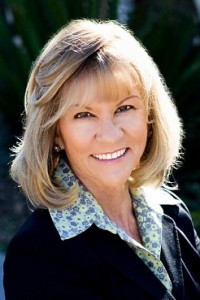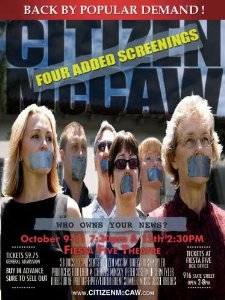
Renee Grubb
When Renee Grubb and Ed Edick founded Village Properties in 1996, they strove to create a community-conscious real estate agency. Part of that dedication to Santa Barbara involved creating the Teacher’s Fund, a nonprofit that makes it easy for teachers to get much-needed financial support for schools. Now Grubb is paying that community-minded spirit forward even further. As the new chair of the Santa Barbara Chamber of Commerce, she has already begun raising scholarship money for at-risk students.
LD: Let’s start with real estate. How is the market right now? Is it a good time to buy?
RG: Well the market is good. I’ve been busy because the number of sales has increased, but this in the last two and a half weeks. … One of our agents yesterday in the meeting gave a number of how many properties went this year so far, and that’s back from January, and three quarters of them went in the last two and a half weeks. So all of the sellers and the buyers who have been, rightly so, a little nervous about the market, are definitely getting off of that and making offers.
LD: So does that mean it’s a good time to buy right now because prices are lower?
RG: Yes. There are deals and the time to buy is when somebody isn’t already making an offer on a property or something, A lot of people they say, “Oh I want to go back and see it three or four times,” and then by the time they go back and see it the third or fourth time there’s either an offer on it or it’s gone. But we’re seeing more multiple offers. There was a property on Sea Ranch, just outside of Hope Ranch. They put it on the market for $1,990,000. It was kind of a fixer and it had something like 12 offers. It went for $300,000 over the asking. I was like what was that all about. We’re starting to see some of that happening again.
LD: Have you always worked in real estate?
RG: No. Before I got into real estate I was pretty much just raising my children but before that I was in the medical industry. I was actually an assistant for an ophthalmologist.
LD: How did you come to start the Teacher’s Fund? I always thought you must have been a teacher before you went into real estate.
RG: Not me, but teachers can make the best real estate agents because they’re already attuned to service and caring … The Teacher’s Fund started in 2002. When we started Village we made a decision that we were going to pretty much support children and children’s causes because you know, you get so many requests. …What happened was we were doling out money for this and that $50 for that and $500 for that … and then one day we hired a PR person. It was really her idea. Her son had come home from kindergarten and he had this long list of things that he had to bring to school. So she said to this teacher … “How do kids bring all of this if their parents can’t afford it?” The teacher said, “Well I make sure every child has the same. I buy it.” So that’s where the idea came from.
… We started out doing just pretty much South County elementary schools, kindergarten through sixth grade, and we were being able to manage that but we weren’t getting very many donations. We did a couple of fundraisers but then Orfalea Family Foundation actually saw in the South Coast Beacon, that wonderful editorial on the Teacher’s Fund, and they called us and they said “Hey we’re interested in that.” I will be forever grateful for that.
LD: That’s wonderful that Orfalea is working with you.
RG: Since Orfalea came aboard we have gone countywide and we’ve gone to junior high, so we are really covering a lot of classrooms … As of this year, I didn’t count the last month, but we have funded $450,000 to 1,090 classrooms since we started and we’ll definitely hit the $500,000 mark this year.
LD: You’re chairing the Chamber of Commerce too.
RG: I’ve been on the board for four years … a lot of people come and ask for endorsements. … This year we are trying to be supportive of the city with the green awareness we’re trying to inform business people so that they are aware of the different ways that they can do that within their businesses and their homes. So we’re kind of pushing that a little bit, I am also trying to support as many of the new businesses in town as possible.
At my installation on January 31st, we decided that we were going to try to raise some funds for at-risk students. The scholarship is called “Chance for Change,” and we set it up with the Santa Barbara Scholarship Foundation, … it’s basically for students … who choose the better path, rather than going into a gang. … We had a speaker, we had a young man who, his brother is in jail and his dad left him when they were kids, you know pretty typical thing, he was raised by his mom and his sister… so he’s being sent through school by a scholarship and he came and spoke.
We had decided that we would try to raise $20,000, which would send five young people to City College for two years. We talked about it and had this young man speak and raised $114,000 that night.
…. It’s just been amazing. It was 250 people in the room and we had donations from as high as $20,000 down to $100, and it felt like almost everybody in the room gave something. It was great. It was an amazing evening.
LD: He must be a great speaker.
RG: I’m telling you, he was so sincere and you knew and his mom was there. It was very exciting. They were just like in amazement that we were able to do that in one evening, but that just shows the generosity in this town.
LD: If you could be invisible anywhere in Santa Barbara, where would you go and what would you do?
RG: Well this is going to sound silly, but I love movies and if I see movies a year in a theatre I’m lucky, so I would love to be able to go to the movies and not have to worry about my cell phone and in the middle day. I would love to do that. That would be just a real treat for me.
Vital Stats: Renee Grubb
Born: January 22, Long Beach, CA
Family: Husband Ed, Daughters Erin and Natalie, and grandchildren Sydney (6), Kelsey (3), Hope (2) and Luke (18 months)
Civic Involvement: Chair of Chamber of Commerce, Founder of the Teacher’s Fund, Montecito Union Education Foundation, Business and Technology Awards Committee, California Association of Realtors Director, Budget and Finance Committee for Santa Barbara Association of Realtors, City of Santa Barbara Infrastructure Financing Task Force.
Professional Accomplishments: Co-Founder and Owner of Village Properties, has sold real estate in Santa Barbara since 1983.
Little-Known Fact: “My husband and I have been married 37 years and we’ve lived in 32 homes. So we fixed and flipped. And I’ve been in my current house ten years, so you can imagine how many houses we lived in.”
Originally published in Noozhawk on March 10, 2008.








